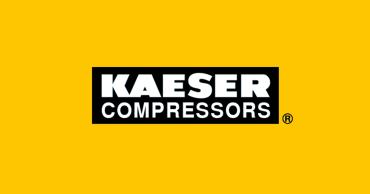Kaeser Compressors Opens New Branches in South Florida

FREDERICKSBURG, Va. — Kaeser Compressors reports it has opened new factory-direct branches to serve customers throughout South Florida.
A combination of brick-and-mortar facilities and “mobile warehouse” service vehicles will provide direct manufacturer support — including KFaCT certified service, parts, equipment sales, and expert system engineering — to Kaeser customers from Key West to Port St. Lucie.
“We are committed to providing our South Florida customers with the seamless support they deserve,” says Director of Branch Operations Matt McCorkle. “We are on the ground and prepared to execute, ensuring our customers’ systems achieve peak reliability and maximum energy efficiency without delay.”
Kaeser says its local team of certified experts is now available to assist with immediate needs, from routine maintenance and troubleshooting to complete system design and installation.
“The new branches offer a direct line to the manufacturer,” the company says, “ensuring faster response times and technical expertise for industrial, commercial and institutional users.”

Drycleaning Customers Who Left a Mark (Part 2)

Media Training, Stain Removal Course Highlight DLI's February Schedule

Drycleaning Customers Who Left a Mark (Part 1)

Al Phillips Cleaners Hires Salazar for Vegas Expansion

What Will 2026 Bring? (Conclusion)

DL Expo West Adds Dry Cleaners/Laundromat Plant Tour

What Will 2026 Bring? (Part 2)

Tide Cleaners Expands in Cincinnati Market with New Acquisition

What Will 2026 Bring? (Part 1)

DLI Presents First Spanish-Language-Only Stain Removal Course
Podcasts for You
Workplace Violence & Prevention

After a deadly shooting at a textile care facility earlier this year, preventing workplace violence has gained a new focus for many dry cleaners. Carol Dodgen of Dodgen Security Consulting and Jay Juffre from ImageFIRST discuss warning signs, training, prevention and more.
Networking with Peers

How do you reach out to peers in the fabricare industry to get help and discuss ideas? Nora Nealis, executive director, National Cleaners Association, shares ways drycleaning owners can connect with colleagues.
Tax Talk! How 2018 Tax Reform Helps Drycleaning Owners

Mark Battersby, well-known tax and finance writer, explores 2018 tax law changes with Bruce Beggs, editor, American Coin-Op.
From the Resource Center
The Complete Spotting Guide & More

Attracting Customers & Increasing Profits—Drycleaning Marketing 101

How to Profit by Going Green: Simple Strategies That Are Friendly to The Earth & The Bottom Line

Latest Digital Editions
Digital EditionAmerican DrycleanerDec/Jan

- What Will 2026 Bring?
- Drycleaning Customers Who Left a Mark
- Bridging the Generation Gap in Your Drycleaning Business

